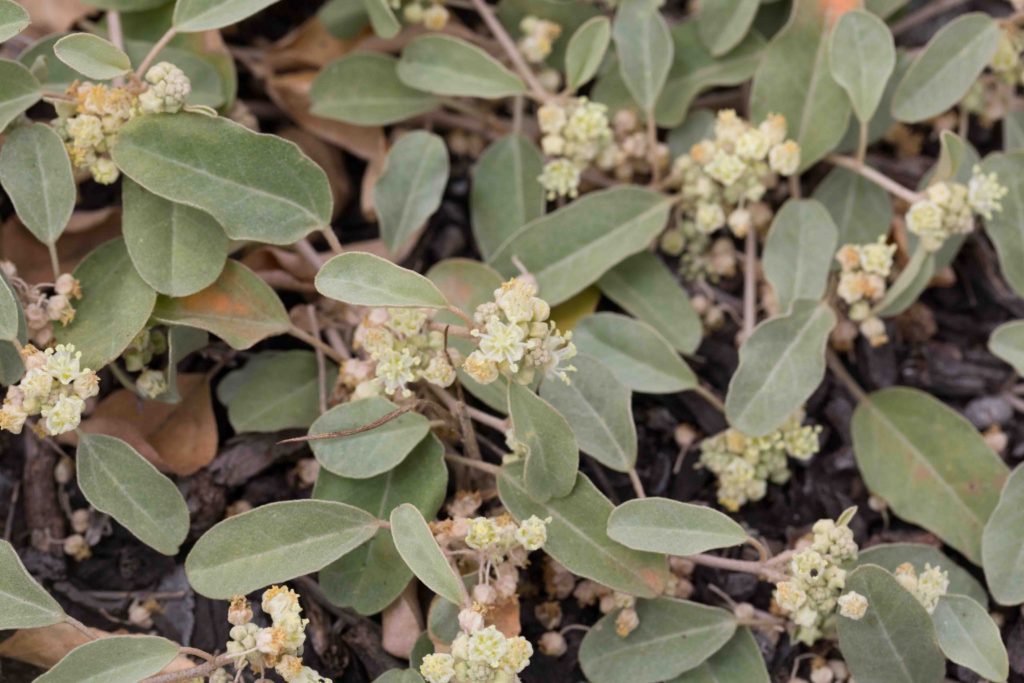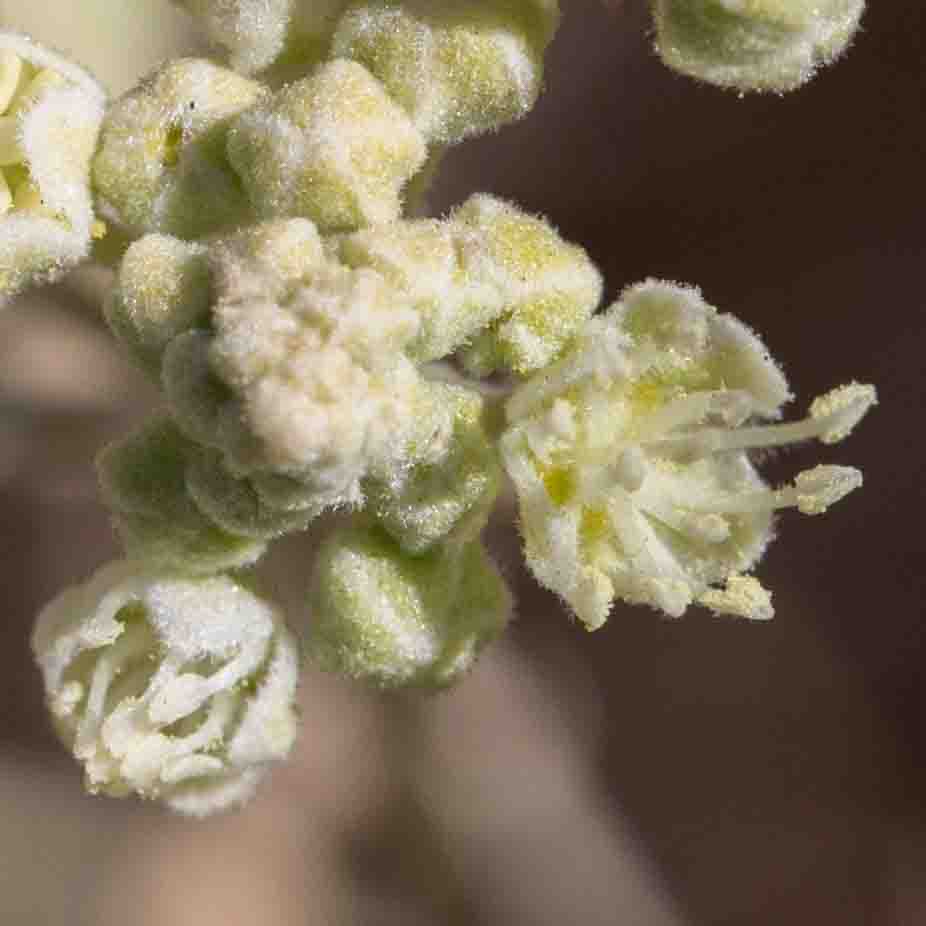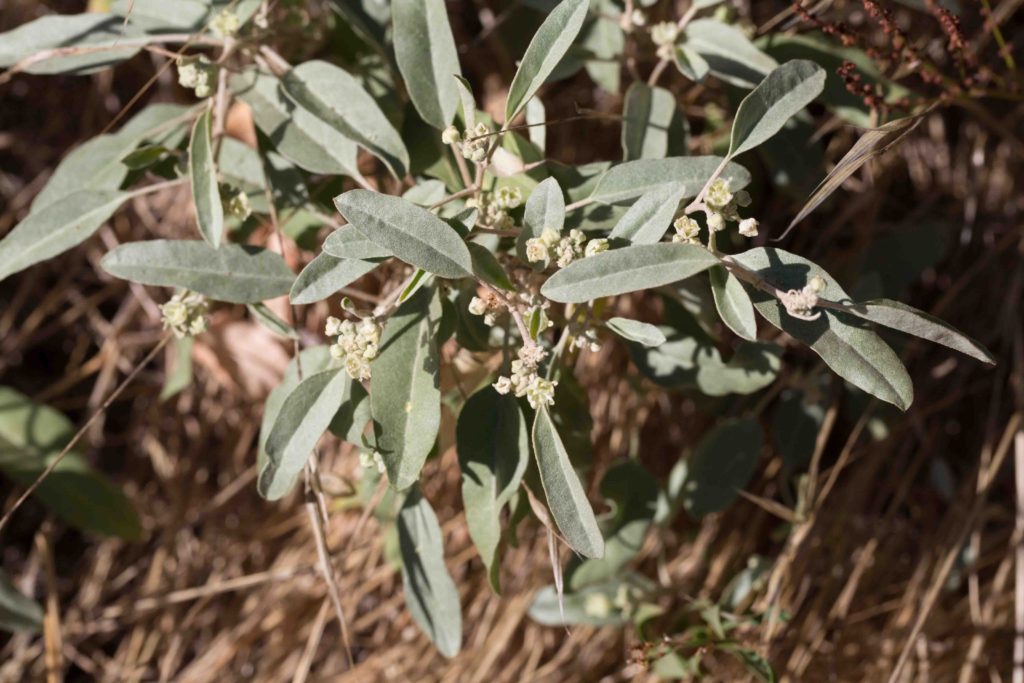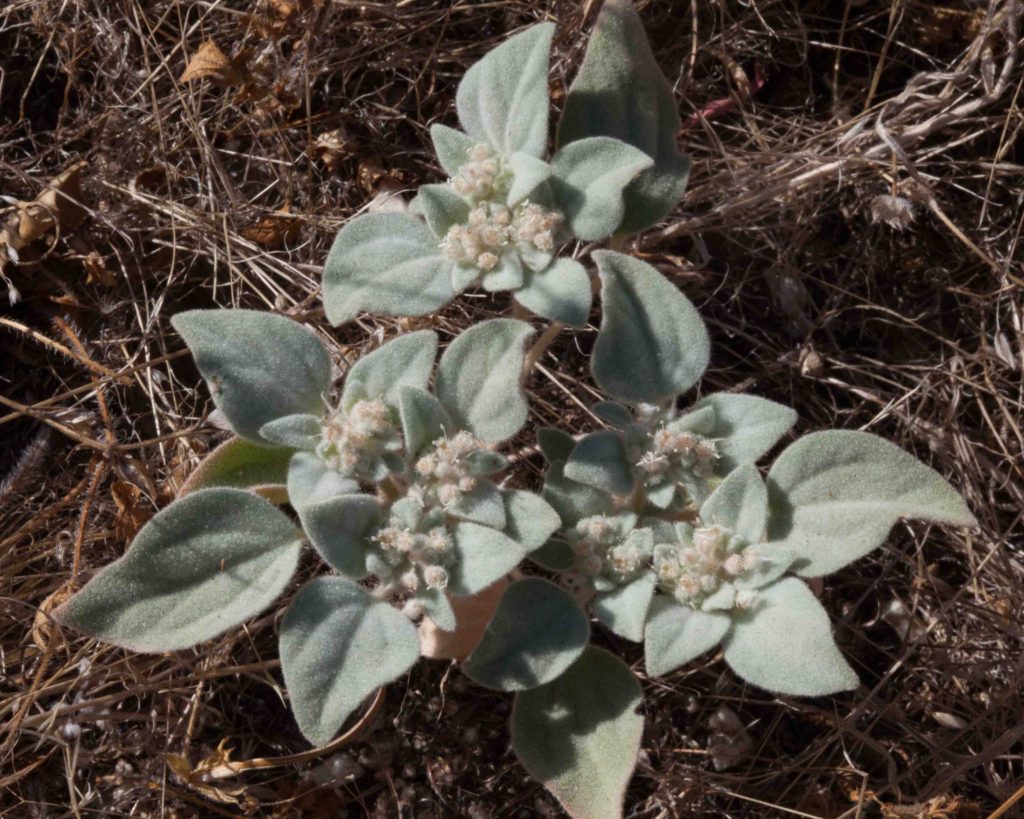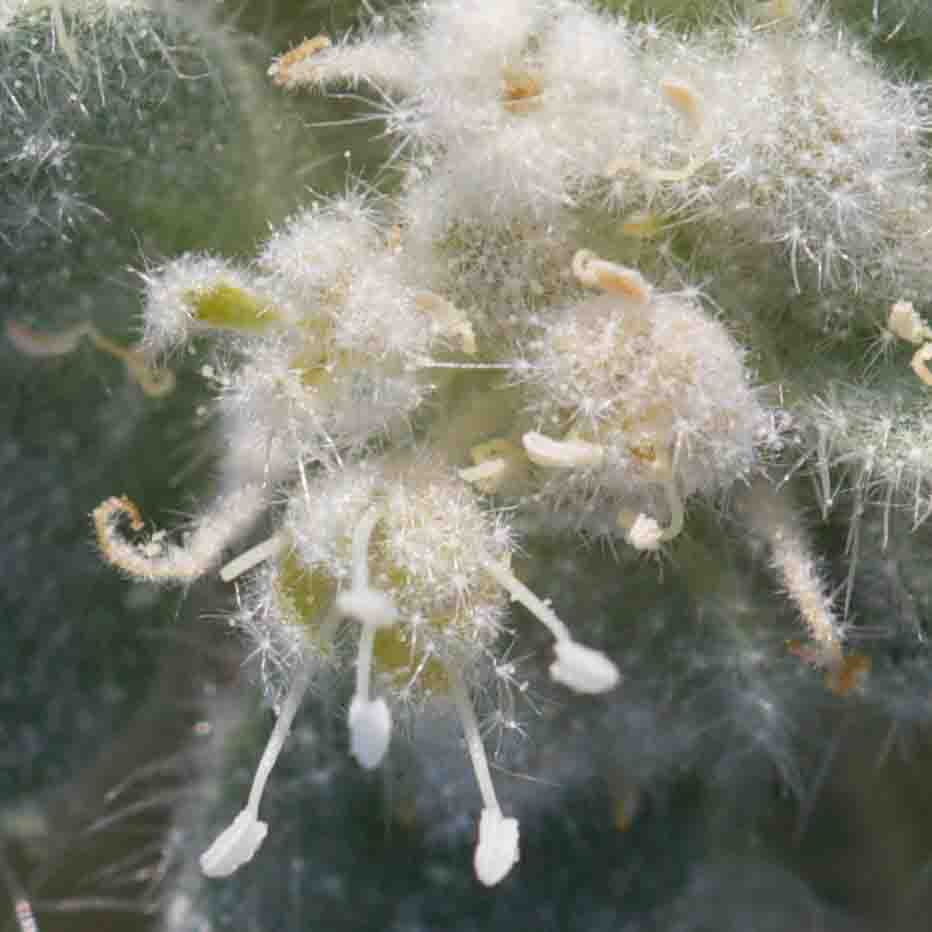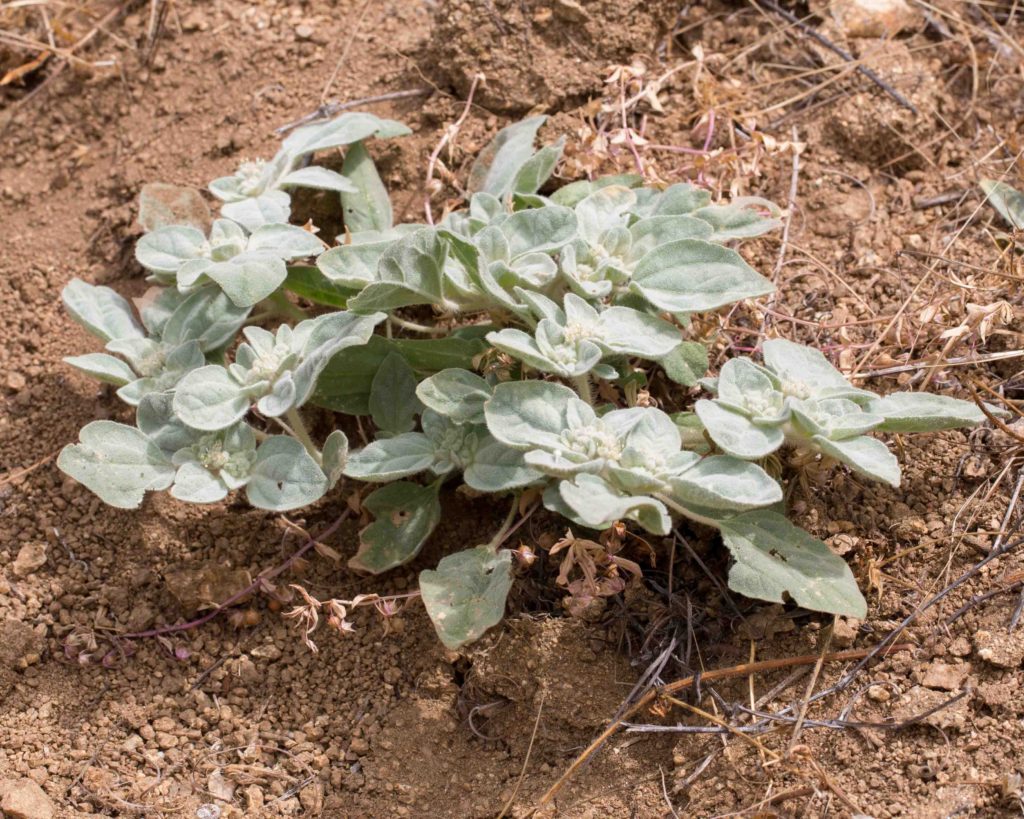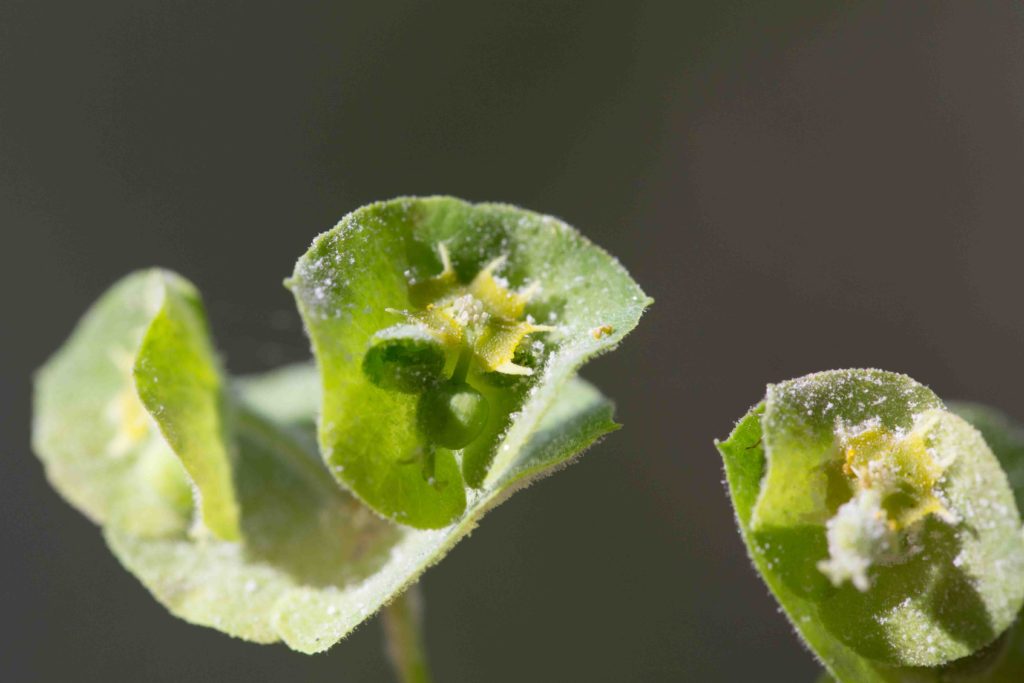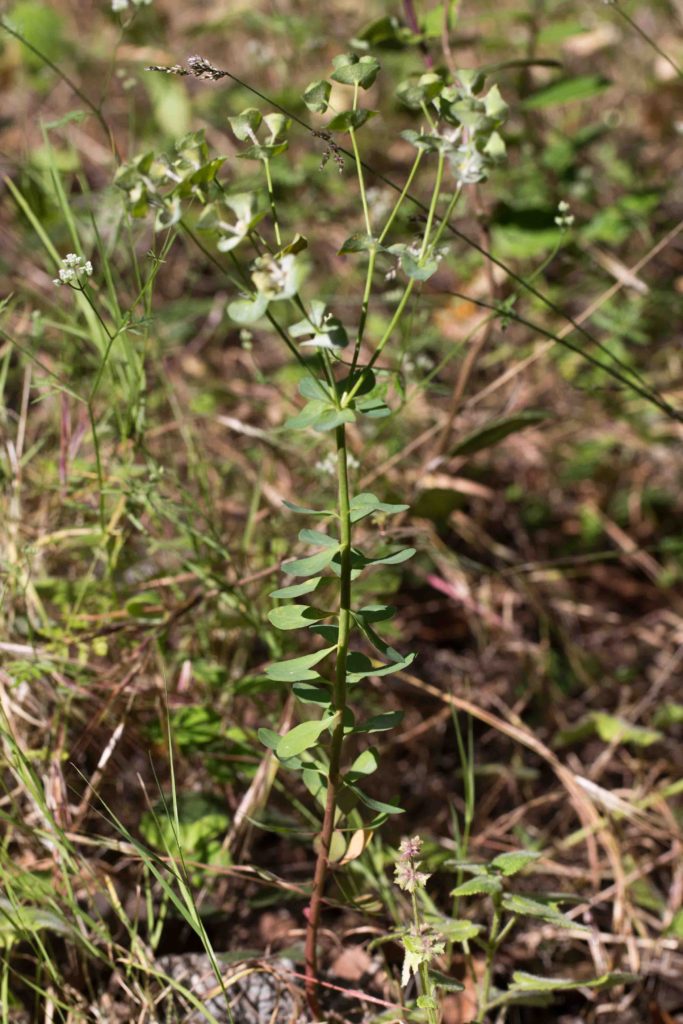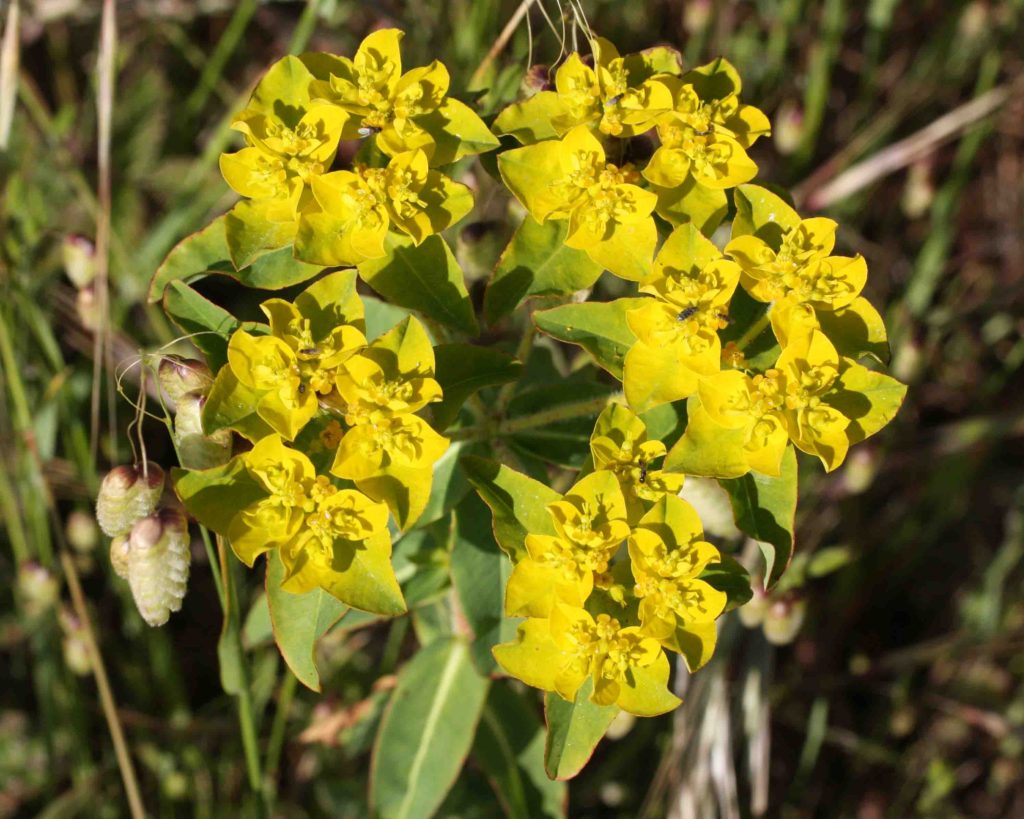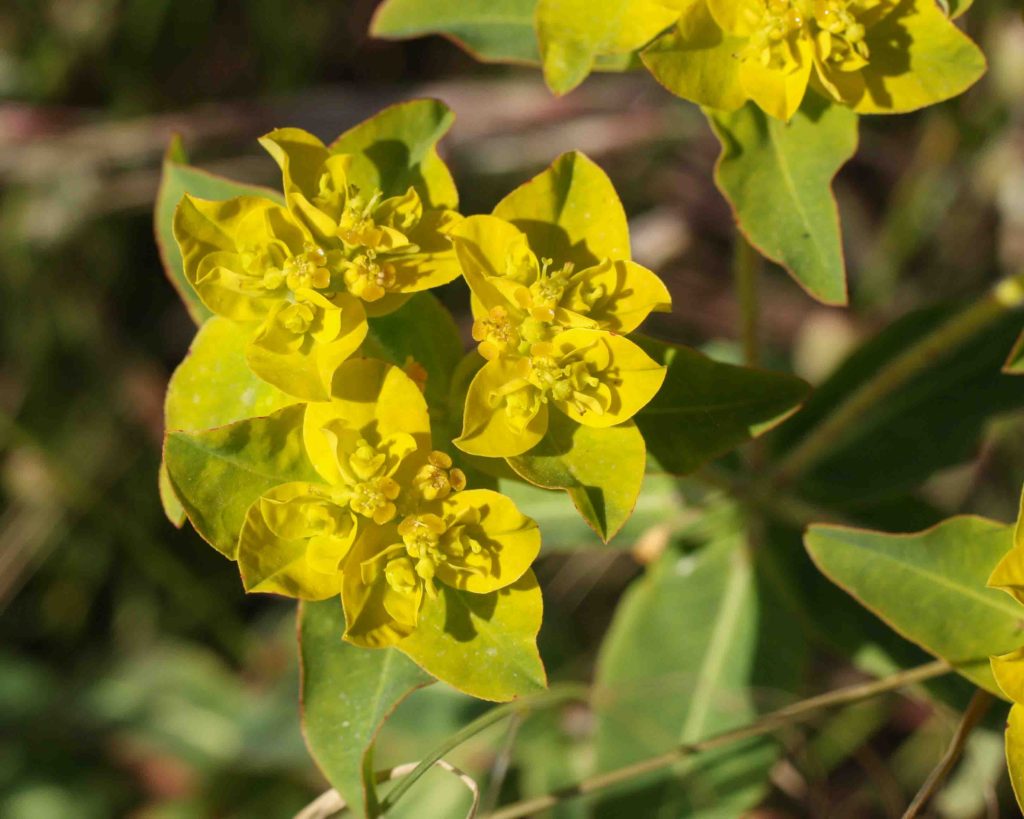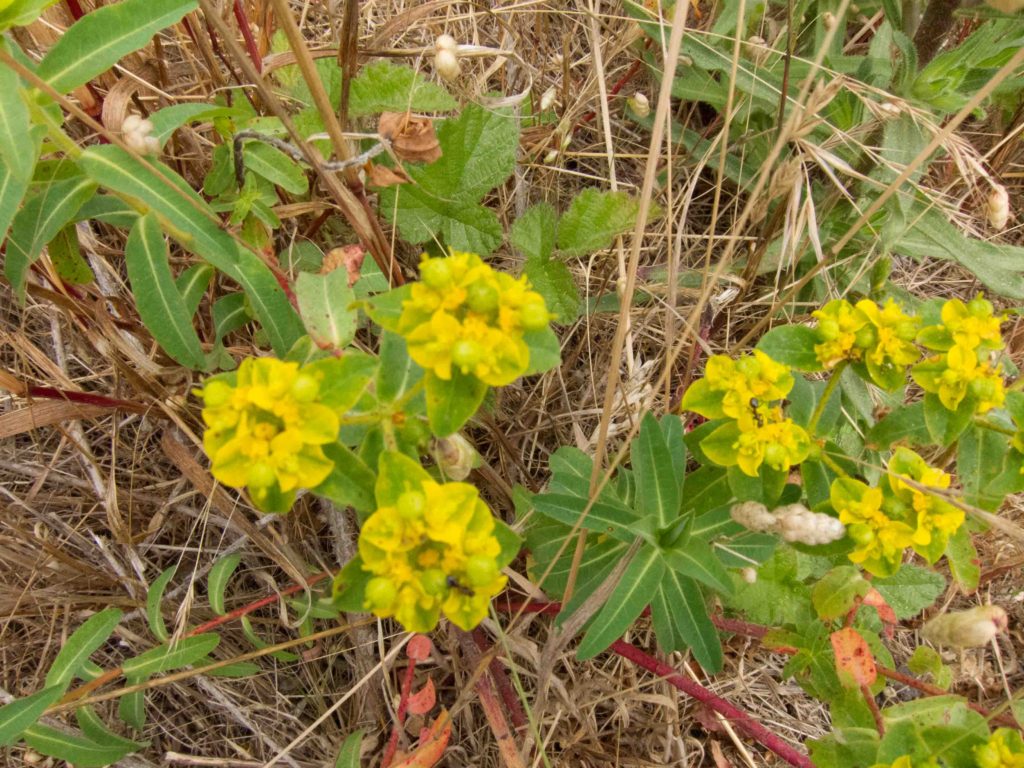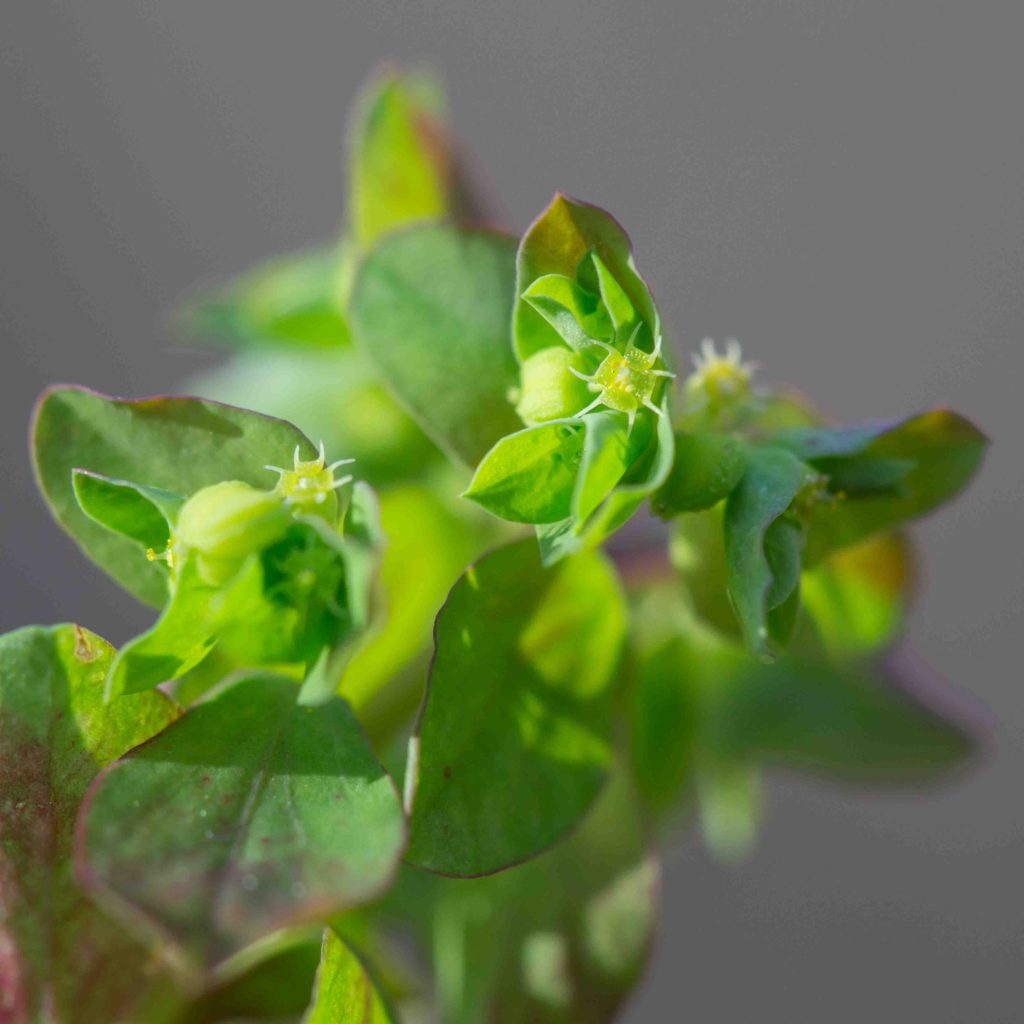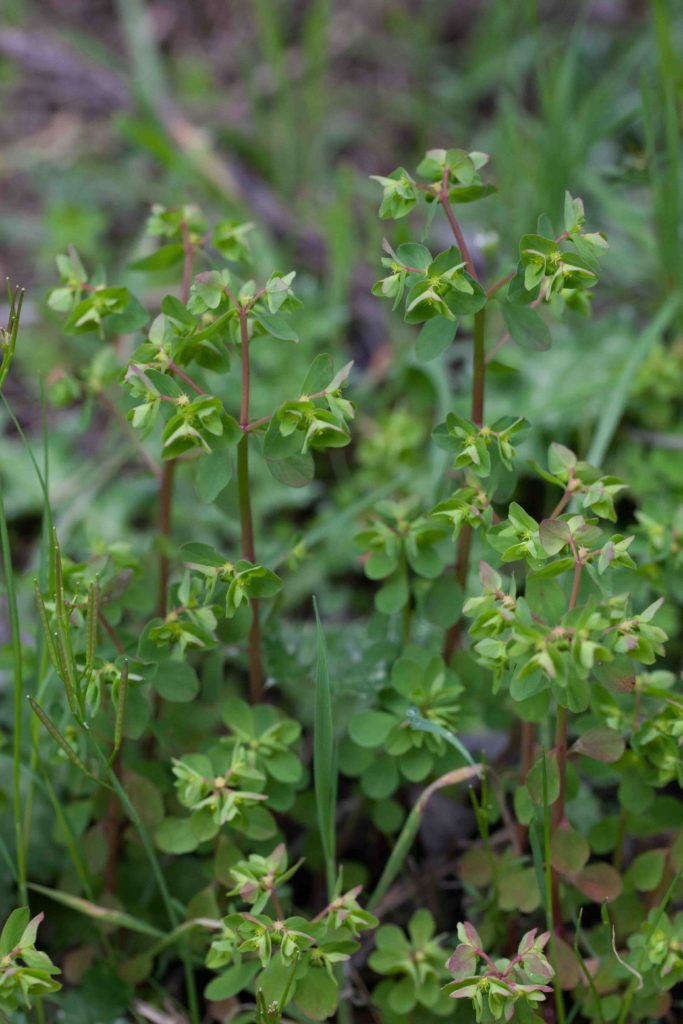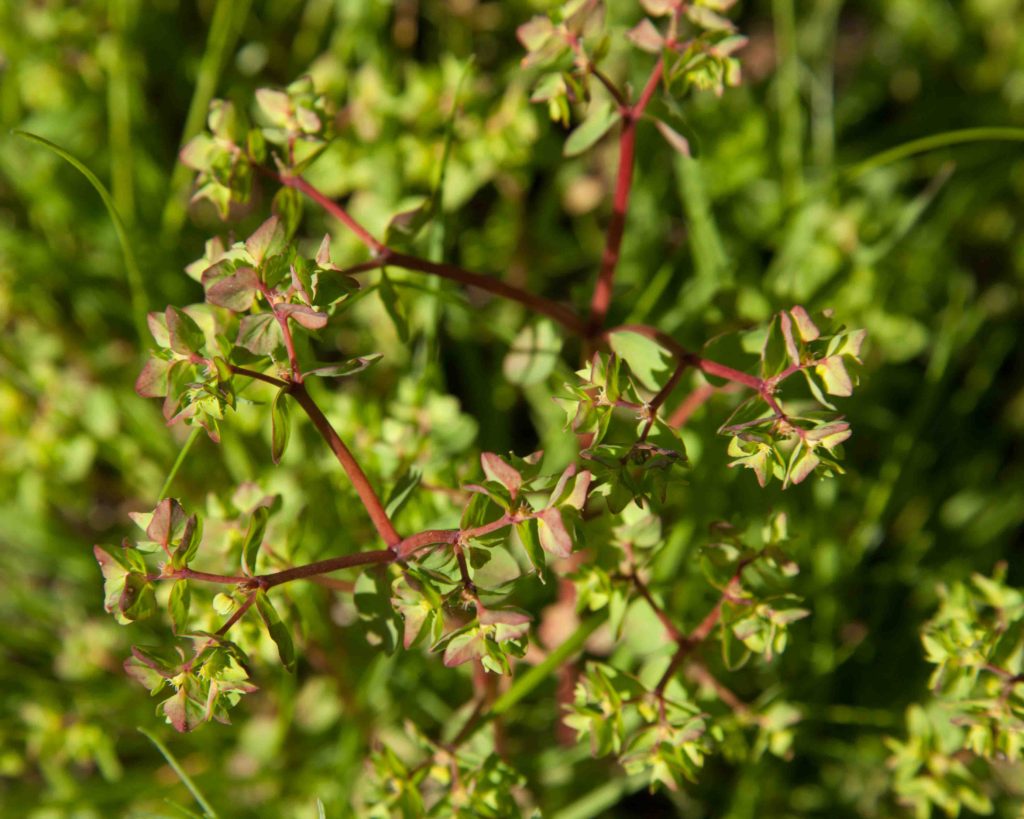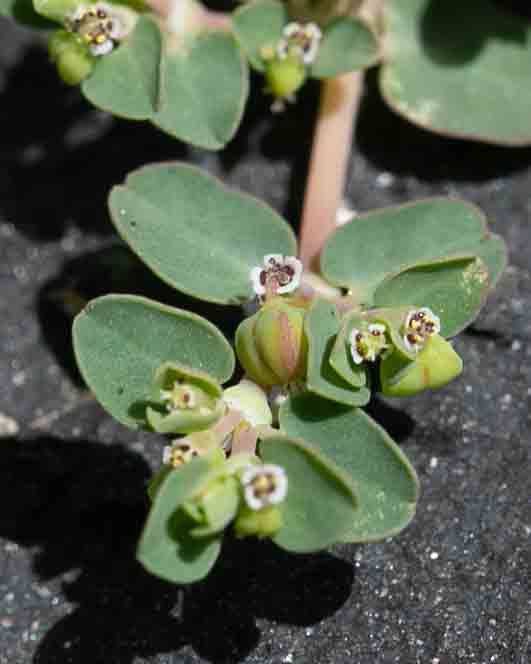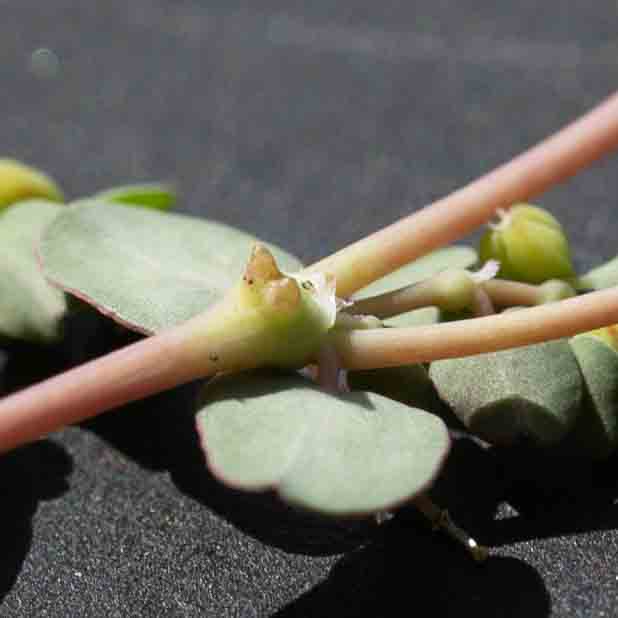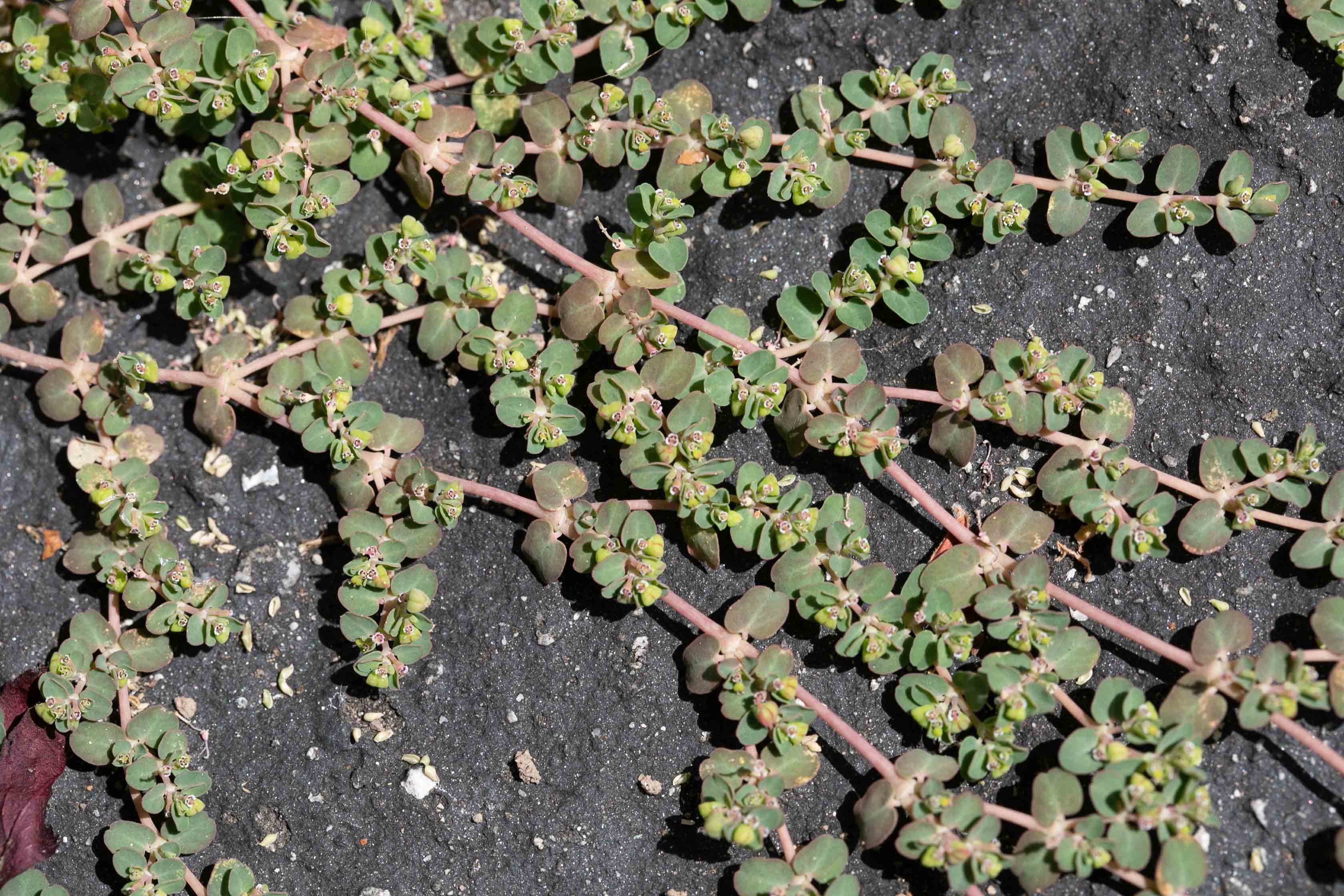Euphorbiaceae: Spurge Family
California Croton – Croton californicus
Blooms:
Apr–Aug
Plant Height:
< 100 cm
Flower Size:
Small
Origin:
Native
Habitat:
Dry sandy places
Notes:
A low-growing perennial to small shrub, this is dioecious (male and female flowers on separate plants). Leaves are elliptic to oblong (20–55 mm long), pale gray-green and felty. Creamy-white petals are tiny and in 5 parts.
Turkey-mullein / Dove Weed – Croton setiger
Blooms:
May–Oct
Plant Height:
< 20 cm
Flower Size:
Small
Origin:
Native
Habitat:
Open grassland
Notes:
This plant is often prostrate, and larger plants can form low mounds. It has distinctive felty, ovate, gray-green leaves. The flowers are creamy-white, small and rather undistinguished. Unlike California Croton (Croton californicus, see above), the plant is monoecious, with separate male and female flowers but on the same plant. Photo #2 by CJH.
Chinese Caps – Euphorbia crenulata
Blooms:
Mar–Aug
Plant Height:
12–60 cm
Flower Size:
Small
Origin:
Native
Habitat:
Dry places
Notes:
This is similar to the non-native and far more common Petty Spurge (Euphorbia peplus, see below). It is a little larger and more robust, and is found in dry rather than moist places. Its flowers, with their horned nectar glands, are very similar, but its fruits are spherical and entire rather than 2-keeled like those of Petty Spurge.
Eggleaf Spurge – Euphorbia oblongata
Blooms:
June–Aug
Plant Height:
50–80 cm
Flower Size:
Small
Origin:
Europe
Invasive?
Yes – limited
Habitat:
Disturbed places
Notes:
A noxious weed. The common name nicely describes this plant with its clusters of bright yellow flowers. The lower leaves are alternate, the upper whorled, 40–65 mm long, smooth and yellowish-green. The stem is densely hairy, unlike Petty Spurge (Euphorbia peplus, see below) and the plant is somewhat larger.
Petty Spurge – Euphorbia peplus
Blooms:
All year
Plant Height:
10–45 cm
Flower Size:
Small
Origin:
Europe
Habitat:
Moist places
Notes:
A very common weed, this is an undistinguished looking plant. It is green with red stems when young, often turning reddish with age. Its flowers are unusual with their horned nectar glands, and its fruits are distinctive with their three, 2-keeled segments.
Matted Sandmat – Euphorbia serpens
Blooms:
May–Sept
Plant Height:
Prostrate
Flower Size:
Very small
Origin:
South America
Habitat:
Disturbed places
Notes:
Weedy, but not as much so as certain other Euphorbias. Most easily recognized by its prostrate growth habit and glabrous leaves. The lower leaves are opposite and the base of the leaves are slightly asymmetrical. The flowers have 4 transversely oblong dark red-purple glands with white petal like-appendages, scalloped at the edges. The glands can only be distinguished under a lens or microscope, at first sight they look like white petals with a red base. The leaf stipules generally have two protruding knobs and a white membranous scale. The fruit is more or less spherical, divided into three distinct lobes
